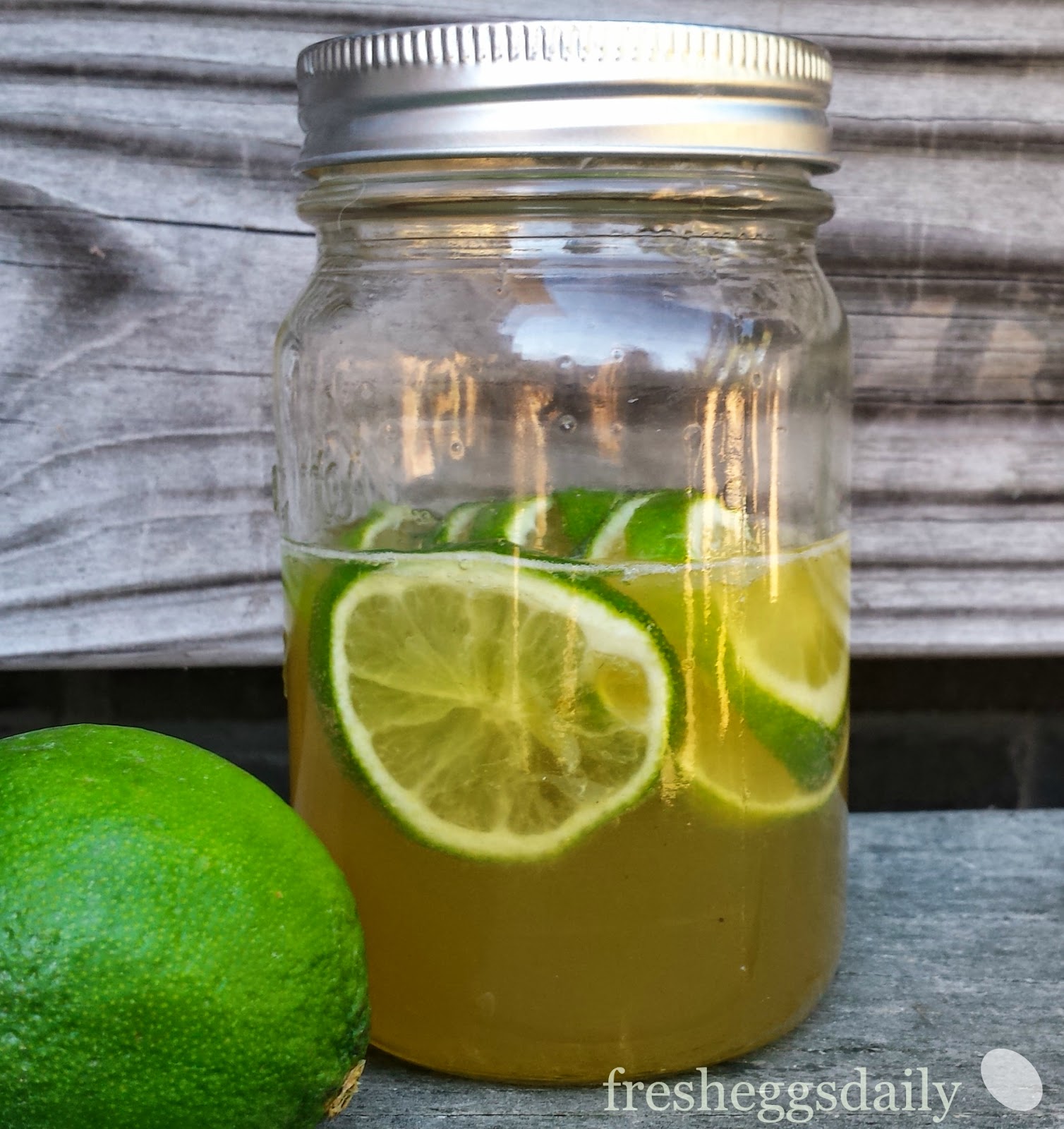 | ||||||||||||||||||||||||||||||||||||||||||||||||||||||||||||||||||||||
| ||||||||||||||||||||||||||||||||||||||||||||||||||||||||||||||||||||||

We are a group of micro farmers who welcome anyone who keeps animals or grows vegetables and fruit, or loves cooking! Who would like to come along to our meetings or events and share their experiences with others. You don't need to have lots of animals to be a "smallholder." Many people who grow vegetables, have some bees or maybe a couple of backyard chickens come along and enjoy the meetings and events as well.
East Essex Smallholders Chitchat Headline Animator
CONTACT EESG
Friday 30 January 2015
Thursday 29 January 2015
Ginger Lime Thyme Homemade Cough Syrup Recipe
Every winter I get a hacking cough that I believe is brought on by the damp moisture in the air here in Virginia and seems to hang on until spring. I've been to our family physician who prescribes me cough medicine with Codeine and basically says just let it run its course. Other years I just drink RobitussinDM by the bottle full until the cough goes away. This year I decided I was done with conventional cough medicines and would make my own, which let me to this recipe from Reformation Acres where I found the inspiration for my version - Ginger Lime Thyme Homemade Cough Syrup.
Since I didn't have any lemons, I substituted a lime instead and also added some fresh ginger. I decided to increase the amount of honey as well, to make the syrup a bit thicker. The resulting cough syrup not only tastes yummy and only takes a few minutes to make, but alsoworks - and I won't worry about swigging unnatural ingredients for the next several weeks as my body slowly works its way through this.
Ginger Lime Thyme Homemade Cough Syrup
Ingredients
1 Lime, sliced thin
3/4 Cup honey (raw, organic and local is best, but any kind is fine)
Generous handful of fresh thyme (I grow thyme on the windowsill through the winter, read how HERE)
Fresh ginger, sliced ( I used about 1")
2 Cups water
Instructions
Place the lime in a pint canning jar or other glass container, pour the honey over the top and set aside. Soaking in the honey will draw the lime juice out, but just to be sure I poked the lime slices a bit with a wooden skewer to allow even more juice to escape.
In a small saucepan, bring the thyme and ginger slices to a boil in the water and then reduce to a simmer. Cook for a few minutes uncovered until the liquid is reduced to about half, leaving you one cup. Remove from the heat and let cool. Strain the liquid into your pint jar (your chickens will love the discarded thyme and ginger slices!) and stir or whisk well to combine. And that's it.
Store your cough syrup in the refrigerator (it will keep for 3-4 weeks) and take a tablespoonful throughout the day as needed, especially before bedtime. Shake the jar up each time to redistribute the ingredients.
Why it Works
Limes - High in Vitamin C like lemons, also antiviral and anti-inflammatory, prevent colds and lessen cold symptoms
Honey - Cough suppressant, soothes sore throats, antibacterial and immune system booster
Thyme - Treats respiratory infections, boosts immune system, antiviral/antiseptic, relieves dry coughs
Ginger - Treats common cold, thins mucus and warms the lungs, anti-inflammatory, strengthens the immune system
(If you are so inclined, a splash of whiskey wouldn't hurt either! That was my mom's go-to cough remedy for us as kids - lemon juice, honey and whiskey - and believe it or not, whiskey does seem to have some health benefits including being an immune system booster and antioxidant.)
If you don't have any thyme, other herbs such as oregano, mint, sage and anise hyssop are also excellent for treating coughs. Brew and steep the same way as above.
Do you have a favorite natural cough remedy?
 |
| -Use simple fresh ingredients for a power-punch of immune system boosting cough suppressant- |
 |
| -Macerate sliced limes in honey- |
 |
| -Bring thyme and ginger to a boil- |
 |
| -Simmer until liquid is reduced- |
 |
| -Let cool completely then pour into your honey/lime mixture- |
 |
| -Fight your cough naturally with this delicious syrup!- |
Limes - High in Vitamin C like lemons, also antiviral and anti-inflammatory, prevent colds and lessen cold symptoms
Honey - Cough suppressant, soothes sore throats, antibacterial and immune system booster
Thyme - Treats respiratory infections, boosts immune system, antiviral/antiseptic, relieves dry coughs
Ginger - Treats common cold, thins mucus and warms the lungs, anti-inflammatory, strengthens the immune system
(If you are so inclined, a splash of whiskey wouldn't hurt either! That was my mom's go-to cough remedy for us as kids - lemon juice, honey and whiskey - and believe it or not, whiskey does seem to have some health benefits including being an immune system booster and antioxidant.)
If you don't have any thyme, other herbs such as oregano, mint, sage and anise hyssop are also excellent for treating coughs. Brew and steep the same way as above.
Do you have a favorite natural cough remedy?
References:
I would love for you to join me here...
Tuesday 27 January 2015
| ||||||||||||||||||||||||||||||||||||
 | ||||||||||||||||||||||||||||||||||||
| ||||||||||||||||||||||||||||||||||||
|
| ||||||||||||||||||||||||||||||||||||
 | ||||||||||||||||||||||||||||||||||||
| ||||||||||||||||||||||||||||||||||||
|
Subscribe to:
Posts (Atom)


















